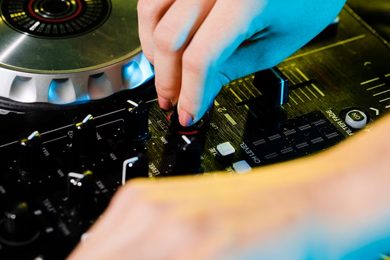This plan includes
- Limited free courses access
- Play & Pause Course Videos
- Video Recorded Lectures
- Learn on Mobile/PC/Tablet
- Quizzes and Real Projects
- Lifetime Course Certificate
- Email & Chat Support
What you'll learn?
- Make PCB with Zero Experience in Electronics
- Learn basic to advance PCB design
- Draw a schematic of your circuit in few simple steps
- Create your own custom Printed Circuit Board (PCB).
- Connect a Breadboard of your circuit in few simple steps
- Auto Route to speed up the routing process
- Make A PCB in the shortest possible time
- Route Printed Circuit Board (PCB)
- Prototype your kickstarter idea
- Get a job in PCB design
- Master Designing electronic circuits
- Simulate and test your circuit before actually making it
- Make a professional Printed Circuit electronic board PCB for your circuit.
- Track you errors in seconds
- Use Proteus Software which is one of the best electronic software ever
- Simulate and design 3D Electronic Circuits
- Program 3D PIC microcontroller using Flow-charting
- Simulate 3D PCB
- Simulate 3D mechanisms
- Simulate 3D Measurements
- Choose the right soldering Iron
- Choose the right tools you need to have to keep yourself safe while soldering and solder the right way
- Choose the best solder out there, and why it is the best
- Clean your soldering Iron
- Change the soldering Iron tip head
- Extend soldering Iron life span
- Get your own Soldering tools that are right for you
- Solder Correctly following The right steps to an excellent soldering
- Set the right heat, solder and tools to be a soldering professional
- Differentiate between good soldering and bad soldering with real life examples
- Test your codes and schematics for PIC Microcontroller without the risk of burning your board. No More bad connections or wrong codes.
- Do realtime Simulation of PIC Microcontroller using development boards with integrated debugger or using any code that you have in hand.
- Save money, since this software is for FREE, you won’t have to pay anything, you don’t even have to buy any components before testing your code, write the code, upload it to the software, test it then you are good to go.
- and many more
Course Overview
Pre-requisites
- A Computer or Laptop with any operating system
- The Software that will be used to create the PCB Provided in the first Section (FREE)
- Basic experience in Electronics
- No materials required if you only wish to view the course
- Have A basic Experience in browsing the internet
- Time, Dedication and Patience to learn and implement new knowledge.
Target Audience
- Everyone who's interested in Electronics
- School Students who want's to learn more about electronics in simple ways
- Teachers who are looking for ways to make learning more fun and interactive
- Circuit Designers, PCB Designers, Electronics Geeks, Circuits Creators
- Anyone Interested in Learning The right way to solder PIC Microcontroller Geeks
- Anyone looking to learn PIC Microcontroller but don't want to buy the Microcontrollers or Electronic Components
- Anyone looking to learn PIC Microcontroller without spending any money buying Programming and Simulation Software
- Anyone starting their journey in PIC Microcontroller
- Anyone looking for a free software to Simulate PIC Microcontroller
- Anyone looking to unleash the power of coding using Simulation
- Newbies looking to enhanse there Circuit design skills and make great PCBs and training kits in not time
- Arduino Geeks
- Anyone looking to learn Arduino but don't want to buy the boards
- Anyone looking to learn Arduino without spending any money buying different boards
- Anyone starting their journey in Microcontrollers
- Anyone who Want to get a job in PCB design
- Anyone who Want to learn Altium Designer in the shortest possible time.
- Anyone who Want to get started creating cool gadgets
- Anyone Interested in Learning New Things about Pinguino (PIC Microcontroller Based Arduino)
- Anyone Interested in Knowing how Pinguino (PIC Microcontroller Based Arduino) board actually works
- Anyone Interested in Knowing what each component inside Pinguino (PIC Microcontroller Based Arduino) does
Curriculum 154 Lectures 11:10:51
Section 1 : Section 1
- Lecture 2 :
- Who We Are
- Lecture 3 :
- Download And Install Software Free
- Lecture 4 :
- Getting Started
- Lecture 5 :
- Customizing Parts
- Lecture 6 :
- Schematic
- Lecture 7 :
- Exporting your design as Image or PDF
- Lecture 8 :
- Making PCB Part1
- Lecture 9 :
- Making PCB Part2
- Lecture 10 :
- Cleaning Board
Section 2 : Section 2
- Lecture 1 :
- Finishing Board and Making it yours
- Lecture 2 :
- Making a more advance random schematic design
- Lecture 3 :
- Print PCB Design on Heat Paper
- Lecture 4 :
- Drilling
- Lecture 5 :
- What You will learn
- Lecture 6 :
- Introduction Prestart Defentions
- Lecture 7 :
- Installing the Required Software Proteus
- Lecture 8 :
- Basic introduction to Proteus ISIS interface and Tools
- Lecture 9 :
- Design Draw and Test your First Simple Circuit
Section 3 : Section 3
- Lecture 1 :
- Introducing Some Teqniques to Master ISIS
- Lecture 2 :
- Create Your Own Electric Element in ISIS Proteus
- Lecture 3 :
- Design Draw and Test a more advanced Circuit
- Lecture 4 :
- Basic Introduction to ARES interface and tools
- Lecture 5 :
- Preparing ISIS Circuit Design to be moved to ARES
- Lecture 6 :
- Placing Elements the right way in ARES
- Lecture 7 :
- Start Routing in Different Ways
- Lecture 8 :
- Finalize Your Circuit for mass production
- Lecture 9 :
- Printing Your design on Heat paper
- Lecture 10 :
- Software used in This Course
Section 4 : Section 4
- Lecture 1 :
- Download and Install The Software
- Lecture 2 :
- User Interface Quick Introduction
- Lecture 3 :
- Practical Work First Experiment Simple Led ONOFF Circuit using switches
- Lecture 4 :
- Flowcharts Introduction and Example
- Lecture 5 :
- Flowcharts and Microcontrollers Intro
- Lecture 6 :
- 7 Segment Counter Example
- Lecture 7 :
- Using 3D Multimeter and Graphs for Circuit Testing
- Lecture 8 :
- Mechanism and Mechanical Parts
- Lecture 9 :
- Course Contents
- Lecture 10 :
- Flowcharts Subroutine Example
Section 5 : Section 5
- Lecture 1 :
- How to Solder
- Lecture 2 :
- Things you need to start soldering
- Lecture 3 :
- Things to Consider when Choosing Soldering Irons
- Lecture 4 :
- Soldering Accessories
- Lecture 5 :
- Soldering Steps Step One Preparation
- Lecture 6 :
- Soldering Steps Step Two Tinning
- Lecture 7 :
- Soldering Steps Step Three Soldering
- Lecture 8 :
- Cleaning Your Soldering Iron
- Lecture 9 :
- Tips and Tricks
- Lecture 10 :
- Examples of Bad Soldering
Section 6 : Section 6
- Lecture 1 :
- Practical Example of Good soldering and Bad soldering
- Lecture 2 :
- Practical Soldering Iron Practical
- Lecture 3 :
- Lets Try Soldering
- Lecture 4 :
- Practical How to clean soldering tip
- Lecture 5 :
- Practical How to solder correctly
- Lecture 6 :
- Practical Soldering
- Lecture 7 :
- Download and Install Simulation Software
- Lecture 8 :
- Interface Explained
- Lecture 9 :
- Interface Menu Explained in Details
- Lecture 10 :
- Main Window Commands
Section 7 : Section 7
- Lecture 1 :
- Simulation Boards MCLab1 For PIC16F84, PIC16F628 or PIC16F648
- Lecture 2 :
- Simulation Boards MCLab2 For PIC16F and PIC18F
- Lecture 3 :
- Simulation Boards PIC Genios Board and Arduino Board
- Lecture 4 :
- Playing with Code Examples with Different Compilers
- Lecture 5 :
- Buttons and LEDs Reading Input and Writing Output
- Lecture 6 :
- LCD Interfacing and Simulation
- Lecture 7 :
- Relay Interfacing with PIC Microcontroller
- Lecture 8 :
- 7 Segment Simulation
- Lecture 9 :
- Buzzer Temperature Fan Heater and PWM Simulation Components
- Lecture 10 :
- What is a Training Kit
Section 8 : Section 8
- Lecture 1 :
- How training kits make your programming, wiring and testing an easy job
- Lecture 2 :
- What are the main components that must be in the training kit
- Lecture 3 :
- What are the extra components that you can be added
- Lecture 4 :
- What is Printed Circuit Board Design
- Lecture 5 :
- What is the best software to do that
- Lecture 6 :
- How to start Designing your kit
- Lecture 7 :
- Designing your kit continue
- Lecture 8 :
- Adding power circuit with protection
- Lecture 9 :
- Making PCB Part1
- Lecture 10 :
- Making PCB Part2
Section 9 : Section 9
- Lecture 1 :
- Final PCB
- Lecture 2 :
- Finishing the board
- Lecture 3 :
- Buying items online and End of the Course
- Lecture 4 :
- Installing Arduino Library For Proteus
- Lecture 5 :
- Downloading and Installing Proteus Software
- Lecture 6 :
- Adding Arduino Library to Proteus
- Lecture 7 :
- Downloading and Installing Arduino Coding Software
- Lecture 8 :
- Your First Code in Arduino Coding Software
- Lecture 9 :
- Editing the code and Getting the Hex File
- Lecture 10 :
- Load the hex file and Run the Simulation
Section 10 : Section 10
- Lecture 1 :
- Download and Installing Altium Designer
- Lecture 2 :
- Altium Designer Interface Introduction
- Lecture 3 :
- Create Component Symbol & Add Pins
- Lecture 4 :
- Finishing the Schematic
- Lecture 5 :
- Creating Your Components Symbol - Making Footprint and PCB Layout
- Lecture 6 :
- Link footprint with Schematic Library
- Lecture 7 :
- Adding the new Library File to your Design
- Lecture 8 :
- Creating the Atmega Component Symbol
- Lecture 9 :
- Creating the Atmega PCB Footprint
- Lecture 10 :
- Adding Components and Placing them on Schematic
Section 11 : Section 11
- Lecture 1 :
- ATMEGA Schematic Connection
- Lecture 2 :
- USB Connector Schematic
- Lecture 3 :
- Header Pins for Nano Board
- Lecture 4 :
- Adding Resistors LED Indicators Voltage Regulator
- Lecture 5 :
- Annotating and Compiling Project
- Lecture 6 :
- Getting Started with the PCB Design Solve Errors
- Lecture 7 :
- Drawing The Board Shape
- Lecture 8 :
- Placing PCB Items Atmega and Headers
- Lecture 9 :
- ICSP SWITCH Resistor array crystal micro usb
- Lecture 10 :
- FTDI Regulator Capacitors
Section 12 : Section 12
- Lecture 1 :
- Manual Routing
- Lecture 2 :
- AutoRouting
- Lecture 3 :
- Improve AutoRouting Trial and Error
- Lecture 4 :
- Greber File and Bill of Material
- Lecture 5 :
- Introduction and Required Components
- Lecture 6 :
- Schematic
- Lecture 7 :
- Download and install Pinguino IDE
- Lecture 8 :
- Download Bootloader File
- Lecture 9 :
- Burn Hex File of Bootloader to Microcontroller
Section 13 : Section 13
- Lecture 1 :
- Drivers
- Lecture 2 :
- First EXAMPLE Blink A LED
- Lecture 3 :
- Now Build your own Pinguino
- Lecture 4 :
- Exporting your Design with Image or PDF
- Lecture 5 :
- Print PCB Design in heat papers
- Lecture 6 :
- Introduction Prestart Detentions
- Lecture 7 :
- Design Draw and Test your First simple Circuit
- Lecture 8 :
- Introducing some technic to master ISIS
- Lecture 9 :
- Segment Counter Example
- Lecture 10 :
- Things to consider when choosing a soldering iron
Section 14 : Section 14
- Lecture 1 :
- Soldering Steps-Step three soldering
- Lecture 2 :
- Tips & Tricks
- Lecture 3 :
- Practical Example of Good and Bad Soldering
- Lecture 4 :
- Practical Soldering Iron -Practical
- Lecture 5 :
- Practical how to clean soldering Tip
- Lecture 6 :
- Interface Menu Explained with Details
- Lecture 7 :
- Main windows Commands
- Lecture 8 :
- Segment Simulation
- Lecture 9 :
- What are the extra components that you can add
- Lecture 10 :
- How to start designing your own kit
Section 15 : Section 15
- Lecture 1 :
- Buying Items Online and End the Course
- Lecture 2 :
- PCB fabrication Print PCB design on heat transfer Paper
- Lecture 3 :
- Downloading_s and Installing Proteus software
- Lecture 4 :
- Your first code in Arduino Coding Software
- Lecture 5 :
- Downloads and Installing Altium Designer
- Lecture 6 :
- Create components and Symbol
- Lecture 7 :
- Create your component symbols-Making footprint and PCB Layout
- Lecture 8 :
- Adding the New Library Files to your Design
- Lecture 9 :
- Adding resistors LED Indicators Voltage Regualtors
- Lecture 10 :
- Anotating the Compiling Project
Section 16 : Section 16
- Lecture 1 :
- Getting Started with the PCB Design Solve Error
- Lecture 2 :
- Placing PCB and ATMEGA headers
- Lecture 3 :
- Placing PCB and ATMEGA headers
- Lecture 4 :
- Improve Auto-Routing Trial and Error
- Lecture 5 :
- Greber File and Bill Material
- Lecture 6 :
- Bonus Lecture Manufacture a Professional PCB - By PCBWay
Our learners work at
Frequently Asked Questions
How do i access the course after purchase?
It's simple. When you sign up, you'll immediately have unlimited viewing of thousands of expert courses, paths to guide your learning, tools to measure your skills and hands-on resources like exercise files. There’s no limit on what you can learn and you can cancel at any time.Are these video based online self-learning courses?
Yes. All of the courses comes with online video based lectures created by certified instructors. Instructors have crafted these courses with a blend of high quality interactive videos, lectures, quizzes & real world projects to give you an indepth knowledge about the topic.Can i play & pause the course as per my convenience?
Yes absolutely & thats one of the advantage of self-paced courses. You can anytime pause or resume the course & come back & forth from one lecture to another lecture, play the videos mulitple times & so on.How do i contact the instructor for any doubts or questions?
Most of these courses have general questions & answers already covered within the course lectures. However, if you need any further help from the instructor, you can use the inbuilt Chat with Instructor option to send a message to an instructor & they will reply you within 24 hours. You can ask as many questions as you want.Do i need a pc to access the course or can i do it on mobile & tablet as well?
Brilliant question? Isn't it? You can access the courses on any device like PC, Mobile, Tablet & even on a smart tv. For mobile & a tablet you can download the Learnfly android or an iOS app. If mobile app is not available in your country, you can access the course directly by visting our website, its fully mobile friendly.Do i get any certificate for the courses?
Yes. Once you complete any course on our platform along with provided assessments by the instructor, you will be eligble to get certificate of course completion.
For how long can i access my course on the platform?
You require an active subscription to access courses on our platform. If your subscription is active, you can access any course on our platform with no restrictions.Is there any free trial?
Currently, we do not offer any free trial.Can i cancel anytime?
Yes, you can cancel your subscription at any time. Your subscription will auto-renew until you cancel, but why would you want to?
Instructor

12990 Course Views
124 Courses



 Tech & IT
Tech & IT
 Business
Business
 Coding & Developer
Coding & Developer
 Finance & Accounting
Finance & Accounting
 Academics
Academics
 Office Applications
Office Applications
 Art & Design
Art & Design
 Marketing
Marketing
 Health & Wellness
Health & Wellness
 Sounds & Music
Sounds & Music
 Lifestyle
Lifestyle
 Photography
Photography




.jpg)
















